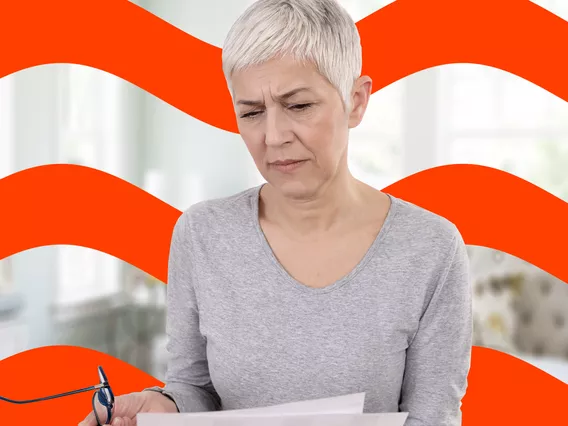A recent move by federal officials to stop national programs from lending down payments to people who can’t come up with the money on their own to qualify for FHA loans will likely make it harder for first-time homebuyers and lower-income families to buy a home.
The no-money-down home loan programs that are administered by national groups — mainly the Chenoa Fund but also applying to other national organizations — have been shut down by the U.S. Department of Housing and Urban Development until it decides on July 23 if the new rule it announced in April will be permanent or modified. Existing Chenoa down payment assistance cases were allowed to continue, but no new cases were allowed during the three-month period, says Ralph DiBugnara, president of Home Qualified, a loan provider in New York City that works with such programs.
HUD oversees the FHA, which offers loans to homebuyers with as little as 3.5% down on a home purchase. For a $200,000 home, that equals a $7,000 down payment.
Buyers who don’t have the money to make a down payment are more likely to default on their loans. Also, low-down payment loans are considered higher risk and require private mortgage insurance or FHA mortgage insurance.
What the policy change is
The new HUD policy requires national entities such as the Chenoa Fund and the National Homebuyers Fund to request formal permission from all of the jurisdictions in which they operate in order to provide down-payment assistance to first-time homebuyers on mortgages insured by the FHA.
Local and state government programs that offer down payment assistance aren’t affected. The smaller local programs usually have less chance of a huge loss through defaults, DiBugnara says, because their goal is to have homebuyers stay in their homes longer. To do this, they’re often given the incentive of not having to repay the loan for the down payment if they live there for at least three years.
HUD changed the policy as a way to prevent another housing crisis like the one a decade ago, when many buyers who couldn’t afford their home loans defaulted on them. People who can’t come up with a down payment on a home are considered by lenders to be a bigger risk for default.
The Chenoa Fund sued HUD over the changes in April, causing HUD to delay its planned changes until July 23. The group is a Native American financial group, though borrowers don’t have to be Native Americans. It provides down-payment assistance on more than 70,000 FHA loans annually, and is in every state except New York. One of HUD’s objections was that Chenoa started as a way to help Native American tribes, but expanded to everyone across the country, DiBugnara says.
The down payment loans are second-lien loans (second mortgages) that Chenoa provides and must be paid back by borrowers, usually at interest rates about a half point higher than the market rate. If on-time payments are made for three years or 10 years, depending on the program, then the loan is forgiven, DiBugnara says. If the borrower moves, refinances or sells the house before then, they must repay the loan.
Living in a home for just three years seems to be too long for many people using down-payment assistance programs, he says. “A lot of people are paying them off or refinancing” and moving, he says of the loans.
Why down payment assistance is needed
Some people can afford a monthly mortgage but can’t afford a down payment, even as low as 3% of the home’s purchase price. About 30% of buyers use some sort of down payment assistance, according to the Urban Institute.
“Three percent is something most people can come up with,” DiBugnara says. “I can see HUD’s fear — that if you can’t afford 3 percent you probably shouldn’t be buying a home.”
Most people don’t put down the traditional 20% down that many homebuyers think is needed to qualify for a mortgage. The median down payment in 2018 was 13%, according to the National Association of Realtors. For a $200,000 home, a 13% down payment is $26,000. At 20%, it goes up to $40,000.
If HUD’s changes remain or are modified, such as requiring borrowers to have reserves or meet an income requirement to qualify for FHA loans, it can still be a good thing for borrowers by having more of a financial commitment to their home, DiBugnara says.
“They’ll require people to have skin in the game,” he says.
Where homebuyers could be hit the hardest are in poor states where more than 40% of buyers use down-payment assistance, according to the Urban Institute. Those include homebuyers in Alaska, Mississippi, West Virginia, Wyoming, and Virginia.
Other options
The good news is that states and local organizations offer down payment assistance that is much more forgiving than national help.
Local funds are more likely to make the money a gift that doesn’t have to be repaid, says Michael J. Barnes, a loan originator at Sun West Mortgage Co. in Scottsdale, Ariz. Even so, Barnes says he doesn’t expect HUD to stick with its ruling, and even if it does, down payment help is available elsewhere.
“There are enough other options for many homebuyers,” he says. “It would be a minor stall for a short period of time.”
Veterans, for example, can get 100% financing through VA loans. The U.S. Department of Agriculture offers the same financing for USDA loan to income-eligible buyers in designated rural areas.





